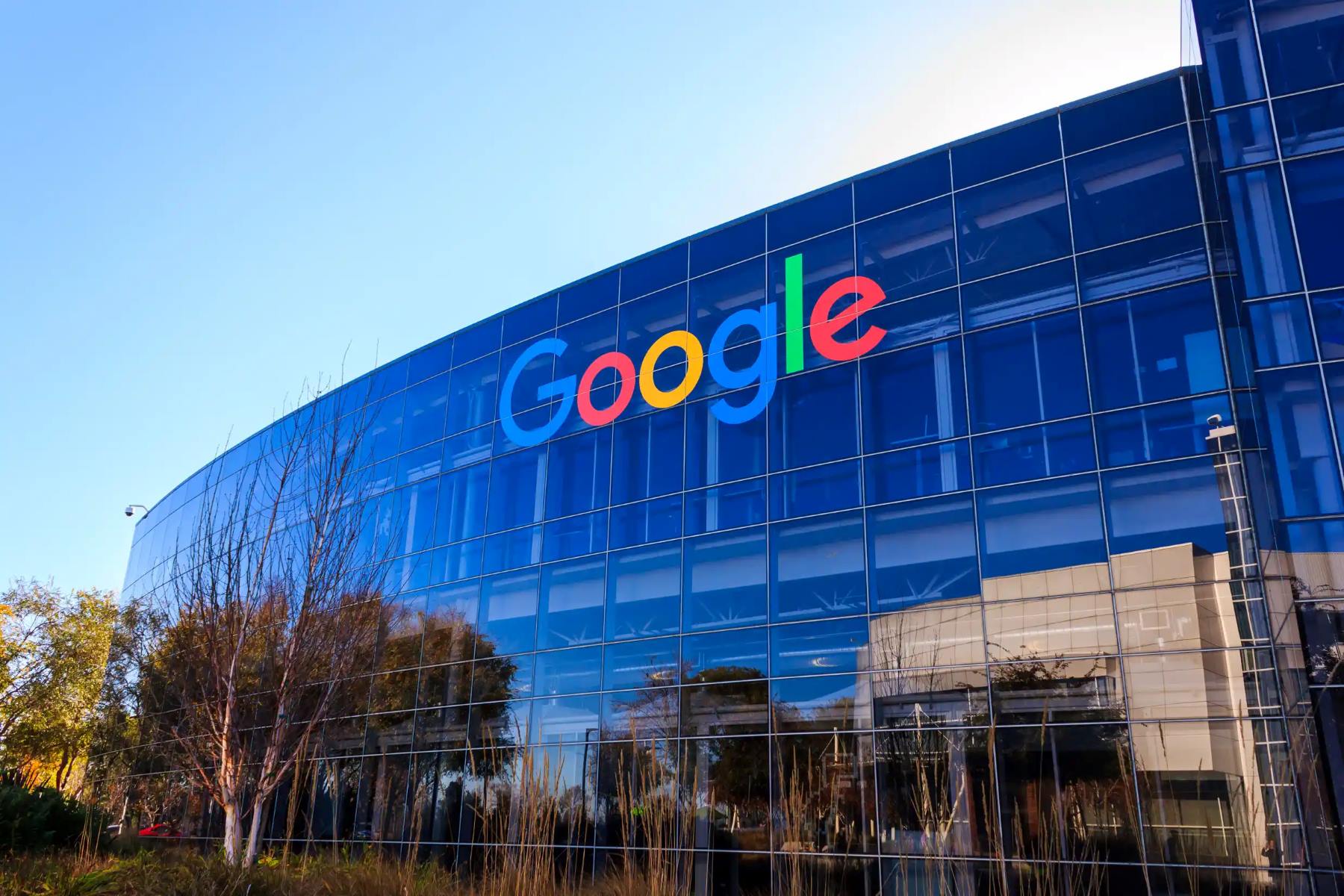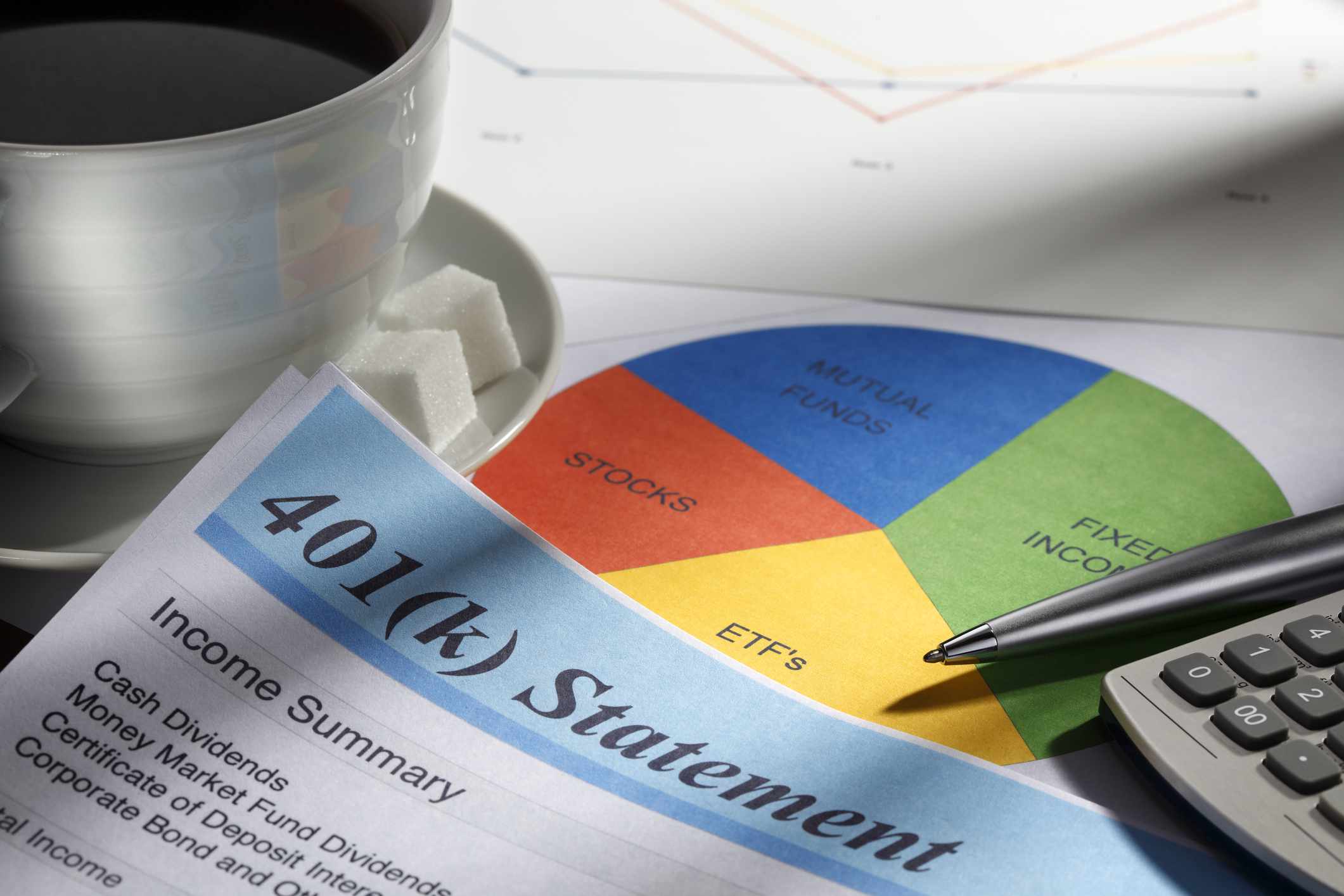

Finance
How Much Does Google Match On 401K
Modified: December 30, 2023
Find out the maximum Google match for 401K contributions. Get financial advice and learn about 401K matching limits in our comprehensive guide on finance.
(Many of the links in this article redirect to a specific reviewed product. Your purchase of these products through affiliate links helps to generate commission for LiveWell, at no extra cost. Learn more)
Table of Contents
Introduction
Welcome to the exciting world of 401k retirement savings plans, where employees have the opportunity to stow away money for their golden years. If you’re fortunate enough to work for Google, you may be wondering about their 401k matching program. How much does Google match on 401k contributions? What factors affect their matching contribution? Allow us to delve into the details and answer these burning questions.
But first, let’s understand what exactly a 401k is and why it’s an important part of retirement planning.
A 401k is a retirement savings plan that allows employees to contribute a portion of their salary, which is then invested in a variety of assets such as stocks, bonds, and mutual funds. The contributions are made on a pre-tax basis, meaning the money is deducted from your paycheck before taxes are applied. This provides immediate tax benefits, as your taxable income is reduced by the amount of your 401k contributions.
What sets a 401k apart from traditional pensions is the element of employee control. With a 401k, employees have the freedom to choose how their funds are invested within the options provided by the plan. This flexibility grants individuals the opportunity to potentially grow their retirement savings over time.
Now that we have a basic understanding of 401k plans, let’s take a closer look at Google’s generous 401k matching program.
What is a 401k?
A 401k is a retirement savings plan that is offered by employers to their employees as a way to save for their future. The name “401k” refers to the section of the U.S. Internal Revenue Code that governs these types of plans. The key feature of a 401k plan is that it allows employees to make contributions to their retirement savings on a pre-tax basis.
When you participate in a 401k plan, you can choose to allocate a portion of your salary to be deducted from your paycheck and contributed to your retirement account. The contributions are made on a pre-tax basis, meaning that the money is taken out of your paycheck before taxes are calculated. This has the benefit of reducing your taxable income for the year, which can ultimately lower your tax liability.
In addition to the tax advantages, another significant benefit of a 401k plan is that employers often offer matching contributions. This means that for every dollar you contribute to your 401k, your employer will also contribute a certain amount, up to a certain limit. This employer match is essentially free money that is added to your retirement account, helping it to grow faster.
Once the money is in your 401k account, you have a range of investment options to choose from. These options typically include a variety of mutual funds and other investment vehicles. The goal is to allocate your investments in a way that aligns with your risk tolerance and long-term financial goals.
One important aspect of a 401k plan to be aware of is that there are limits on how much you can contribute each year. As of 2021, the annual contribution limit for a 401k is $19,500 for individuals under the age of 50. If you are aged 50 or older, you are also eligible for catch-up contributions, which allow you to contribute an additional $6,500 per year.
Overall, a 401k is a valuable tool for retirement planning. It provides individuals with the opportunity to save for their future in a tax-efficient manner, while also benefiting from potential employer contributions. By taking advantage of a 401k plan, individuals can work towards building a secure and comfortable retirement.
Google’s 401k Matching Program
Google is known for its incredible employee benefits, and their 401k matching program is no exception. Google offers a generous matching program to help its employees save even more for retirement.
Under Google’s 401k matching program, the company matches a portion of an employee’s contributions to their 401k plan. The specific matching formula used by Google may vary, but typically it follows a dollar-for-dollar or percentage-based matching structure.
For example, Google may offer a dollar-for-dollar match on an employee’s contributions up to a certain percentage of their salary. This means that for every dollar an employee contributes to their 401k, Google will contribute an equal amount, effectively doubling the employee’s savings. The percentage limit on the matching contribution can range anywhere from 3% to 6% of the employee’s salary.
Google’s matching contributions are a valuable benefit that can significantly boost an employee’s retirement savings. It’s essentially free money that is added to their 401k account, helping it grow at an accelerated rate.
It’s important to note that the matching contributions made by Google may be subject to vesting requirements. Vesting refers to the timeframe it takes for an employee to become fully entitled to the employer’s contributions. Google typically uses a vesting schedule that gradually grants employees ownership of the matching contributions over a certain period of time. This means that if an employee leaves the company before the vesting period is complete, they may forfeit a portion of the employer’s contributions.
Google’s 401k matching program is a valuable incentive that encourages employees to save for their retirement. It not only provides employees with the opportunity to build a substantial retirement nest egg but also demonstrates Google’s commitment to the well-being and financial security of its workforce.
How Much Does Google Match on 401k?
The amount that Google matches on 401k contributions varies depending on the specific plan and the employee’s participation. While the exact details of Google’s matching program may change over time, the company typically offers a competitive matching contribution to help employees maximize their retirement savings.
Google’s 401k matching program often follows a dollar-for-dollar matching formula or a percentage-based matching structure. For example, Google may match 100% of an employee’s contributions up to a certain percentage of their salary.
The percentage limit on the matching contribution can range from 3% to 6% of the employee’s salary. This means that if an employee contributes up to the maximum percentage allowed, Google will match their contributions dollar-for-dollar, effectively doubling their savings.
Let’s say an employee earns a salary of $100,000 and the matching contribution limit is set at 5%. If the employee contributes 5% of their salary or $5,000 to their 401k, Google will match that amount with an additional $5,000. This brings the total contribution to $10,000, with half of it coming from Google’s matching contribution.
It’s important to note that the matching contributions are typically subject to an annual maximum. This means that while Google may offer a dollar-for-dollar match up to a certain percentage limit, there may be a cap on the total amount of matching contributions an employee can receive within a given year.
For example, if the annual maximum for matching contributions is set at $10,000, Google will match an employee’s contributions up to that limit, regardless of the percentage they contribute. If an employee contributes 6% of their salary, which exceeds the percentage limit, Google will still only match up to $10,000.
It’s essential for Google employees to review their specific 401k plan details, including the matching formula and any limits or restrictions that may apply. By understanding the specifics of the matching program, employees can make informed decisions about how much to contribute to their 401k in order to maximize the employer’s matching contribution.
In summary, Google offers a generous 401k matching program that can significantly enhance an employee’s retirement savings. The matching contribution is typically based on a dollar-for-dollar matching formula or a percentage-based structure, with a predetermined limit. By taking advantage of Google’s matching program, employees can accelerate their retirement savings and work towards a more secure financial future.
Factors Affecting Google’s 401k Matching Contribution
Several factors come into play when determining the matching contribution that Google offers on its employees’ 401k plans. Understanding these factors can help employees make informed decisions about their own contributions and maximize their matching benefits. Here are some key factors that may affect Google’s 401k matching contribution:
1. Percentage of Salary: The percentage of an employee’s salary that they contribute to their 401k plan can have a significant impact on the matching contribution. Google typically sets a predetermined percentage limit on the matching contribution, such as 3% to 6% of the employee’s salary. Contributing up to this limit ensures that employees receive the maximum matching benefit from Google.
2. Annual Maximum: Google may place an annual maximum limit on the matching contributions an employee can receive. This means that even if an employee contributes more than the percentage limit, Google will only match up to a certain amount. It’s important for employees to be aware of this limit and adjust their contributions accordingly to make the most of the matching benefit.
3. Vesting Schedule: Google’s matching contributions may be subject to a vesting schedule. Vesting determines the timeframe in which an employee becomes fully entitled to the employer’s contributions. Google typically uses a vesting schedule that gradually grants employees ownership of the matching contributions over a certain period, often a few years. If an employee leaves the company before the vesting period is complete, they may forfeit a portion of the employer’s matching contributions.
4. Plan Design: The specific design of Google’s 401k plan, including any plan amendments or adjustments, can impact the matching contribution. Google may periodically review and update the features of their 401k plan, including the matching formula and maximum limits. It’s important for employees to stay informed about any changes to ensure they are maximizing their matching benefits.
5. Employment Status: The employment status of an individual can affect their eligibility for Google’s matching contribution. Employees who are classified as full-time or eligible part-time workers are typically eligible for the matching benefit. Temporary or contract workers may have different eligibility criteria for participation in the 401k plan and matching contributions.
It’s important for employees to review the details of their specific 401k plan and consult with human resources or a financial advisor if they have any questions. By understanding the factors that affect Google’s matching contribution, employees can make strategic decisions about their own contributions and maximize the benefits of the 401k plan.
Comparing Google’s 401k Matching with Other Companies
When it comes to 401k matching programs, Google is often regarded as a leader in providing generous benefits to its employees. However, it’s always helpful to compare Google’s 401k matching program with offerings from other companies to gain a broader perspective. Here’s a look at how Google’s 401k matching stacks up against other companies:
1. Matching Formula: Google’s 401k matching program typically follows a dollar-for-dollar match or a percentage-based matching structure. Some companies may offer a similar matching formula, while others may provide a lower match, such as a 50% match on employee contributions. The specific matching formula can vary greatly among different employers, so it’s important to compare the details to determine which offers the best match for your financial goals.
2. Matching Percentage: The percentage that companies match can vary widely. While Google’s matching percentage may range from 3% to 6% of an employee’s salary, other companies may offer a higher or lower percentage. Some companies may even offer a tiered matching structure, where the matching percentage increases based on years of service with the company. The matching percentage is an important factor to consider when comparing different employers’ 401k matching programs.
3. Vesting Schedule: Vesting refers to the time it takes for employees to become fully entitled to their employer’s matching contributions. Companies may have different vesting schedules, ranging from immediate vesting to a graded schedule over several years. Google typically uses a vesting schedule that gradually grants ownership of the matching contributions, whereas other companies may have different vesting terms. It’s crucial to understand the vesting schedule to determine the long-term benefits of the matching contribution.
4. Annual Maximum: Companies may impose an annual maximum on the matching contributions employees can receive. Google, for example, may match up to a certain dollar amount or a percentage of an employee’s salary, regardless of the employee’s contribution level. Other companies may have different maximum limits, and this can impact the overall matching benefit an employee can receive. It’s vital to compare these limits to ensure you’re maximizing the employer’s matching contribution.
5. Additional Benefits: While the matching contribution is a crucial component of a 401k plan, it’s also valuable to consider other benefits offered by different companies. Some employers may provide additional perks, such as profit-sharing contributions, automatic enrollment, or retirement education resources. These additional benefits can enhance the overall value of the 401k plan and should be factored into the comparison.
Comparing Google’s 401k matching program with those of other companies can help employees make informed decisions about their retirement savings. It’s important to weigh factors such as the matching formula, percentage, vesting schedule, annual maximum, and additional benefits to determine which employer offers the most favorable 401k matching program for individual financial goals.
Strategies to Maximize Google’s 401k Match
Google’s generous 401k matching program provides employees with an excellent opportunity to boost their retirement savings. To make the most of this benefit, here are some strategies to consider:
1. Contribute at Least the Minimum Required: Google may have a minimum contribution threshold for employees to be eligible for the matching program. Make sure to contribute at least the minimum amount required to qualify for the employer match. Otherwise, you may be leaving free money on the table.
2. Contribute Enough to Maximize the Match: Aim to contribute enough to maximize the matching benefit offered by Google. This typically means contributing up to the percentage limit set by the company. For example, if Google matches up to 6% of your salary, strive to contribute at least 6% to your 401k to take full advantage of the employer match.
3. Increase Your Contributions Over Time: If possible, gradually increase your contributions to your 401k to maximize the employer match. For instance, if you receive a salary increase or a bonus, consider allocating a portion of it towards your retirement savings. Even small increases in your contribution can have a significant impact on your long-term retirement savings.
4. Take Advantage of Bonus Contributions: Some companies, including Google, may offer additional bonus contributions based on specific conditions, such as years of service or performance goals. Be sure to fully understand and utilize any bonus contribution opportunities available to you.
5. Review the Vesting Schedule: Familiarize yourself with the vesting schedule of Google’s 401k plan. Vesting determines the timeframe in which you fully own the employer’s matching contributions. If you plan to leave the company before becoming fully vested, you may want to adjust your contributions accordingly to maximize your own savings rather than relying solely on the employer’s match.
6. Seek Professional Advice: Consider consulting with a financial advisor who specializes in retirement planning. They can assess your individual circumstances and provide personalized guidance on how to maximize your 401k contributions and take full advantage of Google’s matching program.
7. Leverage Other Retirement Accounts: Don’t forget to explore other retirement savings options outside of your 401k. If you’ve already maxed out your employer match, consider contributing to an Individual Retirement Account (IRA) to further grow your retirement funds.
Remember, the goal is to maximize your retirement savings and take full advantage of Google’s 401k matching program. By implementing these strategies, you can make the most of this valuable benefit and work towards a more secure financial future.
Conclusion
Google’s 401k matching program is a significant benefit that can greatly enhance an employee’s retirement savings. By understanding the details of the program and implementing smart strategies, employees can maximize the matching contributions and set themselves up for a more secure financial future.
A 401k is a powerful tool for retirement planning, and Google’s matching program adds an extra layer of value. By contributing to your 401k, you not only receive immediate tax benefits but also take advantage of Google’s matching contributions, which can potentially double your savings over time.
Factors such as the percentage of salary, annual maximum, and vesting schedule can influence the matching contribution. It’s important to be aware of these factors and make informed decisions about your own contributions to maximize the benefits.
When comparing Google’s 401k matching program with those offered by other companies, it’s crucial to consider the matching formula, percentage, vesting schedule, and additional benefits. This comparison allows employees to assess the overall value of the program and make the best choice for their retirement savings.
To make the most of Google’s 401k matching program, contribute at least the minimum required amount and aim to contribute enough to maximize the employer match. Gradually increase your contributions over time and take advantage of any bonus contribution opportunities that may be available to you.
Keep an eye on the vesting schedule and adjust your contributions accordingly if you plan to leave the company before becoming fully vested. Seeking guidance from a financial advisor can also be beneficial in optimizing your 401k contributions and exploring other retirement savings options.
In conclusion, having access to Google’s 401k matching program is a valuable opportunity to build a robust retirement nest egg. By utilizing the strategies outlined and making informed decisions, you can make the most of this benefit and work towards a financially secure retirement.














